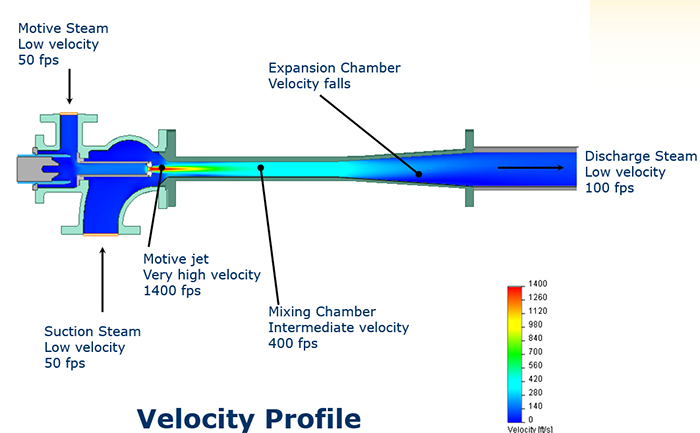The Basics of a Thermocompressor
A thermocompressor is a device used to boost low-pressure steam to higher pressures for reuse in multiple applications. This maximizes energy efficiency by retaining the energy in low-pressure steam while increasing its pressure by mixing in high-pressure steam.
How does a thermocompressor work?
The retained energy is converted to dynamic energy in the form of velocity and then back from velocity to pressure. This means a drop in the pressure will result in an increase in the velocity, or a drop in the velocity will result in an increase in the pressure conversely.1
High-pressure steam, referred to as motive steam, is let out of the nozzle into the mixing chamber generating a high-velocity jet at a very low pressure. This jet is at a lower pressure than the low-pressure steam, referred to as suction steam, that is to be boosted and therefore some of that suction steam is accelerated (sucked up) and mixed with the jet as it goes through the mixing chamber. This mixture is then slowed down gradually in the expansion chamber converting the velocity back into pressure generating a medium-pressure steam, referred to as discharge steam.

1Boyle–Mariotte law is an experimental gas law that states the absolute pressure exerted by a given mass of an ideal gas is inversely proportional to the volume it occupies if the temperature and amount of gas remain unchanged within a closed system.
Mathematically, Boyle's law can be stated as, P α 1 / V, where pressure is inversely proportional to the volume.
Connect with Us
Connect with Kadant Johnson on LinkedIn to learn more about our employees, products, and services.